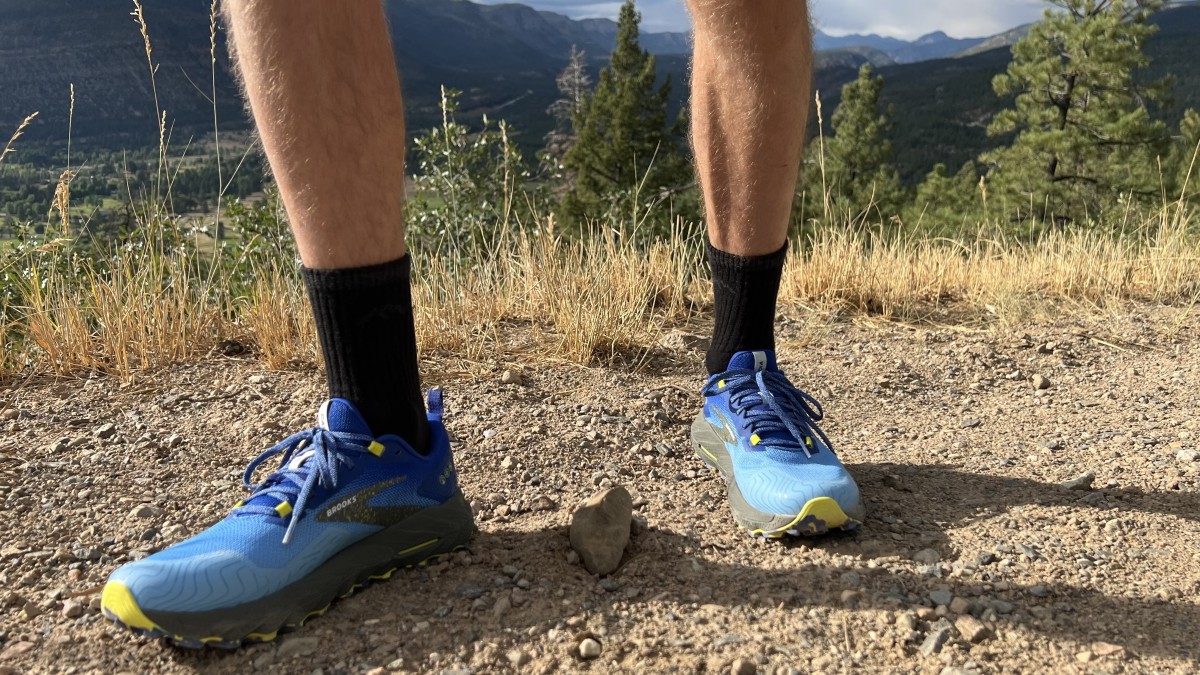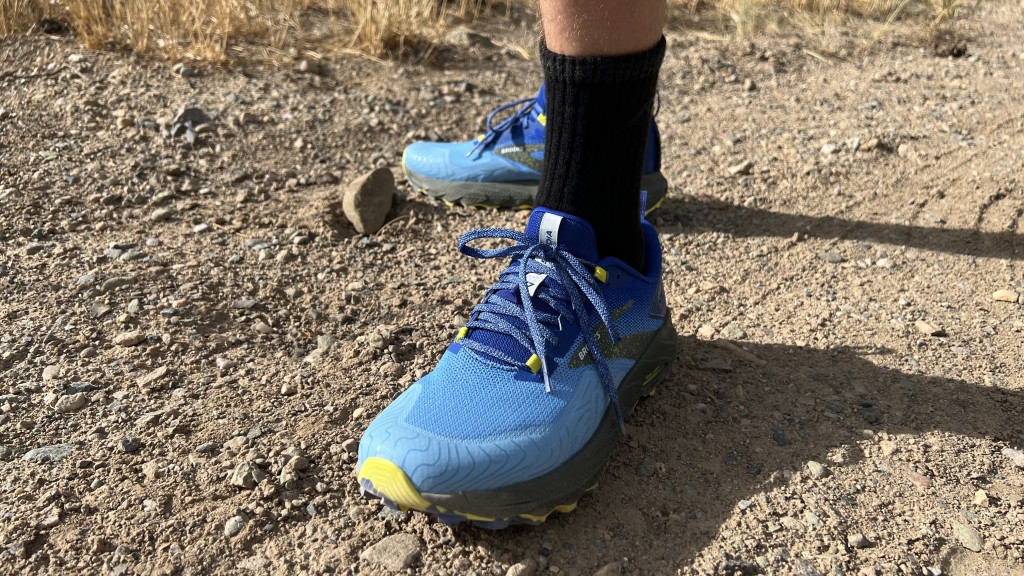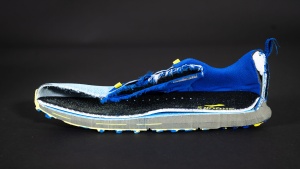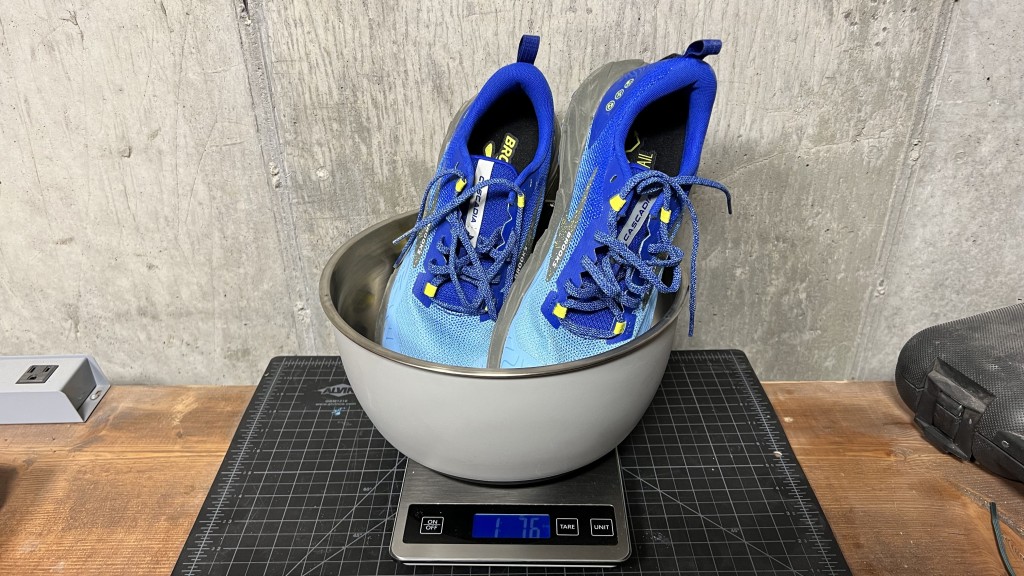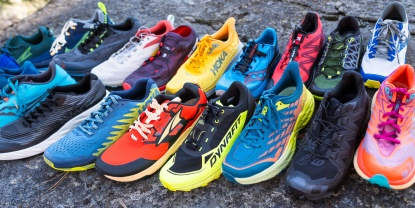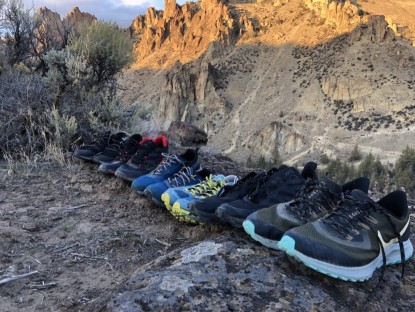Brooks Cascadia 17 Review
Our Verdict
Compare to Similar Products
 This Product
Brooks Cascadia 17 | |||||
|---|---|---|---|---|---|
| Awards | Best for Long Distance Trail Runs | Best Value Trail Runners | |||
| Price | $95.98 at Amazon Compare at 4 sellers | $170.00 at Amazon Compare at 2 sellers | $108.69 at REI Compare at 4 sellers | $104.93 at REI Compare at 2 sellers | $67.95 at Amazon Compare at 2 sellers |
Overall Score  |
|||||
| Star Rating | |||||
| Bottom Line | While there is substantial traction this comes with a weight penalty, we think this shoe is best for blending hiking and running | Nearly perfect in the upper fit but loose in the forefoot, which creates an issue when descending very steep slopes | While comfortable, sometimes the heel rigidity felt overbearing, but this is still a great option for technical terrain | With great responsiveness without feeling harsh, this model is our favorite for long runs that are focused and fast | Some more advanced runners may find this shoe overbuilt with stiffness and support, but we love the protection and comfort |
| Rating Categories | Brooks Cascadia 17 | Nnormal Tomir 2.0 | La Sportiva Bushido... | Hoka Torrent 3 | Brooks Divide 4 |
| Foot Protection (25%) | |||||
| Traction (20%) | |||||
| Sensitivity (15%) | |||||
| Stability (15%) | |||||
| Comfort and Fit (15%) | |||||
| Weight (10%) | |||||
| Specs | Brooks Cascadia 17 | Nnormal Tomir 2.0 | La Sportiva Bushido... | Hoka Torrent 3 | Brooks Divide 4 |
| Sizes Available | 7 - 15 US regular and wide |
4.5 - 12.5 US regular | 6 - 14.5 US regular and wide | 7 - 15 US regular |
7 - 15 US regular |
| Measured Heel Stack Height | 33 mm | 36 mm | 30 mm | 28 mm | 32 mm |
| Measured Heel-to-Toe Drop | 8 mm | 12 mm | 8 mm | 7 mm | 9 mm |
| Rock Plate | Thermoplastic EVA | No | 1.5mm EVA | No | No |
| Measured Lug Depth | 3.5 mm | 5.0 mm | 4.2 mm | 4.0 mm | 2.5 mm |
| Measured Weight | 12.35 oz | 10.84 oz | 11.60 oz | 9.60 oz | 10.82 oz |
| Upper | Mesh | Monofilament polyester + TPE | AirMesh, thermal adhesive microfiber, high-frequency welded ripstop overlays with mono-burr mesh inlays, TPU toe cap | Mesh | Mesh |
| Midsole | DNA LOFT V2 | EExpure midsole | 4mm LaSpEVA, compression-molded MEMlex, 1.5 mm dual-density compressed EVA rock guard in forefoot, TPU STB inserts | EVA | DNA LOFT |
| Outsole | TrailTack Green Rubber | Vibram Litebase | Bi-Compound FriXion XT 2.0 V-Groove3, FLEX Inserts | Rubber | TrailTack Rubber |
| Heel Tab Type | Finger loop | None | Finger Loop | None | None |
| Claimed Heel-to-Toe Drop | 8 mm | 8 mm | 6 mm | 5 mm | 9 mm |
Our Analysis and Test Results
Engineered for demanding terrain, the weight of the Brooks Cascadia 17 left us looking for something lighter. We found the running experience to be too heavy, so we'd recommend this shoe for users looking to blend hiking and running. Luckily, the durability paired with all-day comfort should be enough for some users to appreciate this style of trainer. Still, we'd opt for something with a bit more agility and less footprint on the scale.
Performance Comparison
Foot Protection
Due to the substantial stack height and large amount of cushioning, the Cascadia 17 has substantial underfoot protection. Add on a very stiff toe and heel cap, and this is one of the more protective options in our lineup. During our testing, we experienced little fatigue from trail debris, keeping our feet fresh for many miles. Unfortunately, all of this protection comes with a weight penalty — the excellent protection is a byproduct of the substantial materials used in the design. While it will last a long time and protect for many miles, the result is a heavy model, which could cause turnover to feel heavy for pure long-running efforts.
Traction
Scoring well for traction, we found the lugs on the Cascadia gripped well in a variety of conditions. For wet and muddy terrain, this shoe does better than most, and its tread pattern is easily suited for technical trails. Its moderate hardness does a good job of gripping when needed but is hard enough to feel fast on more solid surfaces. If you want a shoe that can do it all, the Cascadia 17 has the tread pattern to take you on all styles of adventures.
Sensitivity
A large stack height and a high amount of midsole foam create a fairly dead-feeling ride that lacks sensitivity. With such a technical tread pattern, we would've expected some better sensitivity, but unfortunately, that is not the case. This was a deal breaker for us due to the limited ground feel on technical terrain, but if you are moving slower and/or hiking, this could be less of an issue. We view this model as a good candidate for blending running and hiking; it's more than durable enough to tackle the most technical trails, but the performance is minimal at speed. But for those who desire support over sensitivity, we don't think you'd be disappointed.
Stability
This is one of the most stable shoes in our lineup, translating to confidence through the ankles, knees, and hips. This added support does come with a weight penalty, and sometimes it feels overly rigid. We wouldn't want to race in the Cascadia, but for those wanting stable footstrikes, this shoe is worth looking at.
Comfort and Fit
Brooks is known for designing shoes with durability and comfort, and the Cascadia 17 continues with these strong aspects. The upper is comfortable and features plush cushioning, providing all-day comfort. The tongue is also substantially padded and doesn't let through any lace bite. These have a good enough fit that they can be worn tight or slightly looser if you plan on just wearing them around town. Even though the weight is high, you can be confident you will be provided comfort and durability.
Weight
The Cascadia 17 is heavy, weighing 12.35 ounces per shoe for a men's size 10.5 US. This could be a non-issue if you are looking for durability and stability, but we felt clunky and heavy during our training. This is a popular shoe, but we'd hesitate to recommend it to anyone who isn't doing 50K+ ultras. For daily training, you'd likely benefit from something less substantial. Luckily, we are impressed with the durability of both the upper and outsole, which is no surprise coming from Brooks.
Should You Buy the Brooks Cascadia 17?
For runners looking for long-distance comfort with less energetic turnover, this shoe shines by offering protective and stable cushioning. The Cascadia is clearly a favorite for ultra-length distances where the athlete is blending hiking and running as this style is less weight dependent. For long-distance ultras where you primarily will be running either due to fitness or course profile, this comfort comes at a cost. Being one of the heaviest shoes in our test group, runners who put a priority on more effortless turnover in long-distance racing may want to choose a lighter model.
What Other Trail Running Shoes Should You Consider?
If you are considering the Cascadia and don't plan to run 50+ miles, you should consider the Brooks Divide 4; it offers the same great stability without the additional weight, and it's cheaper to boot. While it's only about an ounce and a half per shoe, this was a noticeable difference when comparing them. Another shoe that we love if you want to cover distances and shed weight is the Hoka Torrent 3.


